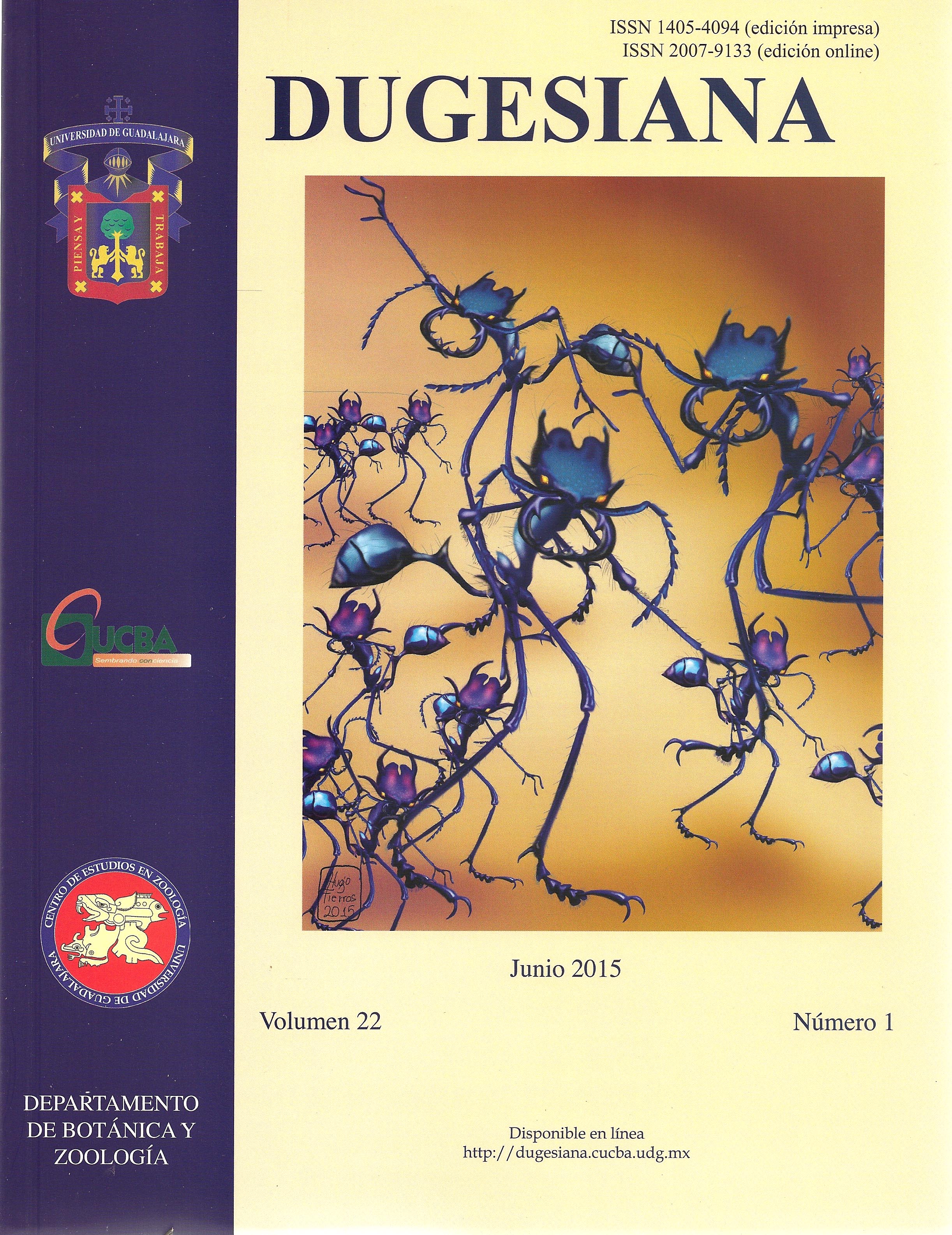La comunidad de hormigas y sus artrópodos acompañantes en frutos secos de cacao: un hábitat diverso no explorado
DOI:
https://doi.org/10.32870/dugesiana.v22i1.4173Palabras clave:
Nidos de hormigas, diversidad, interacciones, gremios tróficosResumen
Los frutos de cacao secos o en descomposición constituyen un hábitat explotado por distintas especies de hormigas para establecer sus nidos, generando un ambiente particular que a su vez es explotado por una diversidad de organismos que se establecen en asociación con tales nidos. Se estudió la composición de la comunidad de hormigas y artrópodos acompañantes en nidos de cacao en áreas experimentales en Ilhéus, Bahía, Brasil, comparando tanto frutos caídos como frutos retenidos en la planta. Un total de 34 frutos secos de cacao fueron revisados. Los frutos colgados estuvieron ocupados por seis especies de hormigas, con Neoponera villosa como la más común, mientras que en los frutos caídos habitaron ocho especies, con Camponotus cingulatus ocupando más del 50% de ellos. Un total de 42 taxa fueron encontrados acompañando a las hormigas en los nidos, 37 en los caídos (15 exclusivos) y 26 en los colgados (siete exclusivos). Grupos como Mollusca, Myriapoda (Diplopoda, Chilopoda y Symphyla) y Opilionida, fueron encontrados sólo en los nidos de frutos caídos. Algunos grupos de depredadores como Reduviidae y Schizomidae, sólo se encontraron en los nidos de frutos colgados. La composición de la comunidad en ámbos tipos de frutos fue diferente, con más detrítívoros encontrados en los frutos caídos y más depredadores en los colgados. Las complejas interacciones que se establecen en los nidos en los frutos sugieren la importancia de este ambiente para el funcionamiento del ecosistema y el mantenimiento de la biodiversidad en los cultivos de cacaoDescargas
Publicado
Número
Sección
Licencia
1. Política propuesta para revistas que ofrecen acceso abierto
Aquellos autores/as que tengan publicaciones con esta revista, aceptan los términos siguientes:- Los autores/as conservarán sus derechos de autor y garantizarán a la revista el derecho de primera publicación de su obra, el cuál estará simultáneamente sujeto a la Licencia de reconocimiento de Creative Commons que permite a terceros compartir la obra siempre que se indique su autor y su primera publicación esta revista.
- Los autores/as podrán adoptar otros acuerdos de licencia no exclusiva de distribución de la versión de la obra publicada (p. ej.: depositarla en un archivo telemático institucional o publicarla en un volumen monográfico) siempre que se indique la publicación inicial en esta revista.
- Se permite y recomienda a los autores/as difundir su obra a través de Internet (p. ej.: en archivos telemáticos institucionales o en su página web) antes y durante el proceso de envío, lo cual puede producir intercambios interesantes y aumentar las citas de la obra publicada. (Véase El efecto del acceso abierto).
2. Política propuesta para revistas que ofrecen acceso abierto diferido
Aquellos autores/as que tengan publicaciones con esta revista, aceptan los términos siguientes:- Los autores/as conservarán sus derechos de autor y garantizarán a la revista el derecho de primera publicación de su obra [ESPECIFICAR PERIODO DE TIEMPO], el cuál estará simultáneamente sujeto a la Licencia de reconocimiento de Creative Commons que permite a terceros compartir la obra siempre que se indique su autor y su primera publicación esta revista.
- Los autores/as podrán adoptar otros acuerdos de licencia no exclusiva de distribución de la versión de la obra publicada (p. ej.: depositarla en un archivo telemático institucional o publicarla en un volumen monográfico) siempre que se indique la publicación inicial en esta revista.
- Se permite y recomienda a los autores/as difundir su obra a través de Internet (p. ej.: en archivos telemáticos institucionales o en su página web) antes y durante el proceso de envío, lo cual puede producir intercambios interesantes y aumentar las citas de la obra publicada. (Véase El efecto del acceso abierto).




